Adda247 is hiring Content Developers for Bank Exams and JAIIB & CAIIB Exams. Run by a team of IIT and IIM Alumni, Adda247 offers great opportunities for learning and growth.
“We are Hiring, and working with us will provide you plethora of opportunities to explore your career with intrapersonal and interpersonal skills…”
We’re always looking for people who can bring new perspectives and life experiences to our teams. If you’re looking for a place that values your curiosity, passion, and desire to learn, if you’re seeking colleagues who are big thinkers eager to take on fresh challenges as a team, then you’re exactly what we are looking for.
Profiles We Are Hiring For
Content Developer: Full-Time
(Freshers may apply- Job Location: Gurugram Only)
We are Hiring Content Developers for the following Subject:
- English Language for Bank Exams
- Reasoning Ability for Bank Exams
- Quantitative Aptitude for Bank Exams
TRANSLATOR (English to Hindi) : Full-Time
(Freshers may apply- Job Location: Gurugram Only)
We are Hiring Translator who should be fluent in typing and translating English Language Content to Hindi Language. Candidates with 0.5 to 1 year experience will be preferred fresher may also apply.
Content Developer: Freelancer
(Freshers may apply)
We are Hiring Content Developers for the following Exams:
- Junior Associate of Indian Institute of Banking and Certified Associate of Indian Institute of Banking
Send your Resume to
content.hiring@adda247.com
Keep the subject of your e-mail as:
<Freelancer for JAIIB & CAIIB-Your Name-Your Location>
or
<Content Developer-Subject-Your Name-Your Location>
or
<TRANSLATOR-Your Name-Your Location>
We will contact the shortlisted candidates by e-mail and they’ll have to visit us with their Resume for Interview, Test and Hiring Process.



 GA Capsule for SBI Clerk Mains 2025, Dow...
GA Capsule for SBI Clerk Mains 2025, Dow...
 The Hindu Review October 2022: Download ...
The Hindu Review October 2022: Download ...
 Daily Current Affairs Quiz: 7th November...
Daily Current Affairs Quiz: 7th November...








